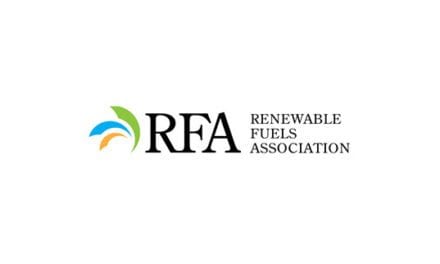WTI Crude Oil Breaks $50 Support
- Prices soften even as crude oil usage grows
- U.S. shale oil production benefitting from efficiency gains
- Crude oil demand is forecast to grow in 2017 and 2018
- Natural gas injections grow, reflecting mild temperatures
 Sincerely,
Alan Levine, Chairman of Powerhouse
Sincerely,
Alan Levine, Chairman of Powerhouse

The Matrix
The failure of the OPEC-non-OPEC production control agreement still controls prices. West Texas Intermediate (WTI) crude oil spot futures prices are now comfortably below $50, despite a modest decrease in inventories for the week ending April 21. Refineries have stepped up, recording record high crude oil runs of 17.3 million barrels daily. Higher runs are responding to growing product exports.
The implications of expanding global crude oil production extend beyond price. Unregulated production in the United States is benefitting from improvements in technology developed in other sectors of the oil industry. In particular, there have been notable improvements in deep-water drilling that can be adapted to shale fracturing as well. Thus, the probability that lower prices could discourage new refining of products is lessened to some degree by higher efficiencies that lower break-even prices.
Exports demand has been particularly notable for distillate fuel oils. Despite some easing of recently high demand, days’ supply of distillate fuel oil continues to tighten. Domestic use of distillates was 3.7 million barrels daily during the report week. This was a weekly decline of 510,000 barrels per day.

Exports dropped sharply too, falling to 1.1 million barrels per day. This was a decline of 949,000 barrels daily.
These are weekly data, notoriously variable. Nonetheless, analysis of longer time frames confirms the growth of exports and tighter stock levels despite lower-than-average heating degree days (HDDs). Exports are likely to continue to grow. The U.S. is a major supplier to Mexico and elsewhere in Latin America. Local refineries in that region are older and less capable of increasing distillate output.
Domestically, consumption is forecast to rise again this year after suffering in recent years. The Energy Information Administration (EIA) projects demand rising by 70,000 barrels daily in 2017. Another 120,000 barrels per day are forecast for 2018.
Supply/Demand Balances
Supply/demand data in the United States for the week ending April 21, 2017, were released by the EIA.
Total commercial stocks of petroleum increased 6.6 million barrels during the week ending April 21, 2017.
Builds were reported in stocks of gasoline, fuel ethanol, K-jet fuel, distillates, residual fuel and other oils. Stocks of propane were unchanged from the previous report week.
Commercial crude oil supplies in the United States decreased to 528.7 million barrels, a draw of 3.6 million barrels.
Crude oil supplies decreased in four of the five PAD Districts. PAD District 2 (Midwest) crude oil stocks fell 1.9 million barrels, PADD 3 (Gulf Coast) stocks declined 1.2 million barrels, PADD 4 (Rockies) stocks retreated 0.2 million barrels and PADD 5 (West Coast) stocks decreased 0.2 million barrels. PAD District 1 (East Coast) stocks were unchanged from the previous report week.
Cushing, Oklahoma, inventories decreased 1.2 million barrels from the previous report week to 67.4 million barrels.
Domestic crude oil production increased 13,000 barrels daily to 9.265 million barrels per day.
Crude oil imports averaged 8.912 million barrels per day, a daily increase of 1.102 million barrels.
Exports grew 587,000 barrels daily to 1.152 million barrels per day.
Refineries used 94.1% of capacity, an increase of 1.2 percentage points from the previous report week.
Crude oil inputs to refineries increased 347,000 barrels daily. There were 17.285 million barrels per day of crude oil run to facilities. Gross inputs, which include blending stocks, grew 219,000 barrels daily to 17.515 million barrels daily.
Total petroleum product inventories saw an increase of 10.2 million barrels from the previous report week.
Gasoline stocks increased 3.4 million barrels; total stocks are 241.0 million barrels.
Demand for gasoline fell 17,000 barrels per day to 9.206 million barrels daily.
Total product demand decreased 330,000 barrels daily to 19.110 million barrels per day.
Distillate fuel oil supply grew 2.7 million barrels to 150.9 million barrels. National distillate demand was reported at 3.667 million barrels per day during the report week. This was a weekly decrease of 510,000 barrels daily.
Propane stocks were unchanged from the previous report week at 39.7 million barrels. Current demand is estimated at 947,000 barrels per day, an increase of 20,000 barrels daily from the previous report week.
Natural Gas
According to the EIA:
Mild temperatures result in higher-than-average net injections into working gas storage. Net injections into storage totaled 74 Bcf, compared with the five-year (2012 – 2016) average net injection of 57 Bcf and last year’s net injections of 64 Bcf during the same week. Net injections into working gas during the storage week were the largest reported so far in the 2017 injection season and the largest reported this early in the refill season since April 17, 2015.
Working gas levels are 14% lower than last year’s record levels, but well ahead of the five-year average. Working gas levels are 358 Bcf lower than last year’s levels at this time.
Futures trading involves significant risk and is not suitable for everyone. Transactions in securities futures, commodity and index futures and options on future markets carry a high degree of risk. The amount of initial margin is small relative to the value of the futures contract, meaning that transactions are heavily “leveraged.” A relatively small market movement will have a proportionately larger impact on the funds you have deposited or will have to deposit—this may work against you as well as for you. You may sustain a total loss of initial margin funds and any additional funds deposited with the clearing firm to maintain your position. If the market moves against your position or margin levels are increased, you may be called upon to pay substantial additional funds on short notice to maintain your position. If you fail to comply with a request for additional funds within the time prescribed, your position may be liquidated at a loss and you will be liable for any resulting deficit. Past performance may not be indicative of future results. This is not an offer to invest in any investment program.
Powerhouse is a registered affiliate of Coquest, Inc.
Was this helpful? We’d like your feedback.
Please respond to [email protected].
Copyright © 2017 Powerhouse, All rights reserved.







